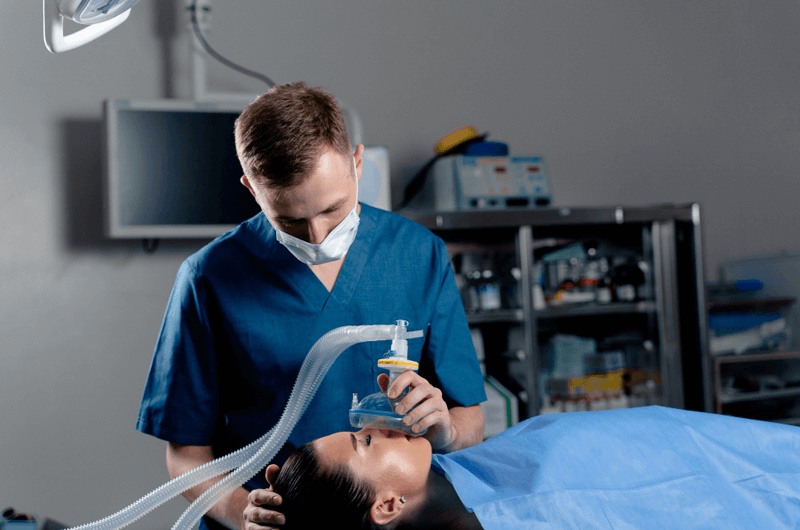Understanding the use of anesthesia and HCPCS modifiers is critical to communicate specific information to payers about the procedure or service provided. Expert coders in medical coding companies know when, how and why two-digit modifiers should be used.
Anesthesia procedure codes must be submitted with the appropriate anesthesia reimbursement modifier for prompt and correct payment of claims by indicating who performed the anesthesia service.
Anesthesiologist Modifiers
AA Anesthesia services performed personally by anesthesiologist
AD Medical supervision by a physician; more than four concurrent anesthesia procedures
QK Medical direction of two, three or four concurrent anesthesia procedures involving qualified individuals
QY Medical direction of one certified registered nurse. Anesthetist by an anesthesiologist
CRNA Modifiers
QZ CRNA service: without medical direction by a physician
QX CRNA service: with medical direction by a physician
GC Services performed in part by a resident under the direction of a teaching physician; services are not reimbursable to a resident
- GC should be appended to a service that has been completed by a resident in a teaching facility in part under direction and supervision of a teaching physician
- GC should be listed in the second modifier field when supervising/teaching anesthesiologist is involved in two concurrent anesthesia cases with one resident (or “fellow”), he/she may bill usual base units and anesthesia time for amount of time present with resident throughout pre, intra and post anesthesia care
23 – Unusual anesthesia for a procedure which usually requires either no anesthesia or local anesthesia but because of unusual circumstances must be done under general anesthesia. This modifier is used only with Anesthesia codes (CPT codes 00100-01999). Modifier 23 is added after the primary anesthesia modifier which identifies whether the service was personally performed, medically directed or medically supervised (Modifiers AA, AD, QK, QS, QX, QY or QZ). This modifier is not to be reported with procedure codes that include the phrase “without anesthesia” in the description or that are normally performed under general anesthesia
Anesthesia Informational Modifiers
Anesthesia informational modifiers are for information only and should be included after the reimbursement modifiers. Though there is no additional payment for informational modifiers, they are critical for the billing process.
QS – Monitored anesthesia care service
G8 Monitored Anesthesia Care (MAC) for deep complex, complicated or markedly invasive surgical procedure. This modifier can be billed by CRNA or physician. Report with anesthesia procedure codes only, and specify the actual anesthesia time on the claim
G9 Monitored Anesthesia Care (MAC) for patient who has history of severe cardiopulmonary condition
P1–P6 Anesthesia Physical Status Modifiers
The following informational modifiers are used to indicate physical status during the anesthesia procedure. They should be used after reimbursement modifiers.
P1 A normal healthy patient
P2 A patient with mild systemic disease
P3 A patient with severe systemic disease
P4 A patient with severe systemic disease that is a constant threat to life
P5 A moribund patient who is not expected to survive without the operation
P6 A declared brain-dead patient whose organs are removed for donor purposes
General Informational Modifiers
General informational modifiers can be used for procedures other than anesthesia, but may also apply to procedures an anesthesiologist performs. They should be appended after reimbursement modifiers
- PT – A colorectal cancer screening test which led to a diagnostic procedure. This modifier can be applied to a variety of surgical codes, but for anesthesiologists, append to anesthesia procedure code 00810 only
- Q6 – Service furnished by a locum tenens physician
HCPCS Modifiers
HCPCS modifiers are similar to CPT modifiers and work in almost exactly the same way. Features of HCPCS modifiers:
- Have two characters
- Are appended to the end of a HCPCS or CPT code with a hyphen
- HCPCS modifiers are always a letter, while CPT modifiers are numeric
- While most codes correspond to parts of the body, there are also modifiers for ambulance services and mammograms
- HCPCS modifiers for functionality directly affect reimbursement and are listed first, followed by those that provide information
Anatomical modifiers indicate the area or part of the body on which the procedure is performed on during the same session. HCPCS modifiers are regularly used in CPT codes to describe a bilateral procedure that was only performed on one side of the body.
E1-E4 Eyelids
FA-F9 Fingers
TA-T9 Toes
RT Right
LT Left
LC Left circumflex, coronary artery
LD Left anterior descending coronary artery
LM Left main coronary artery
RI Ramus intermedius
RC Right coronary artery
HCPCS Level II modifiers are used primarily to identify products, supplies, and services not included in the CPT codes, such as ambulance services and durable medical equipment, prosthetics, orthotics, and supplies (DMEPOS) when used outside a physician’s office.
Common DME Modifiers
nU – purchased new equipment
MS – Maintenance and service fee
RA – Replacement of a DME, orthotic or prosthetic item
RR – Rental Use
New HCPCS Modifiers for 2017
The Centers for Medicare & Medicaid Services (CMS) has introduced 2 new HCPCS modifiers that will affect reimbursement rates in 2017.
FX – X-ray taken using film: Claims for X-rays using film must include modifier FX
PN – The second new modifier is PN, which is non-excepted service provided at an off-campus, outpatient, provider-based department of a hospital
Note: Certain HCPCS modifiers are not compatible with certain CPT modifiers. For instance, CPT modifier -50 would not agree with HCPCS modifiers -LT and -RT, as CPT modifier -50 describes a bilateral procedure, while HCPCS modifiers -LT and -RT describe which side of the body a procedure is performed.




